
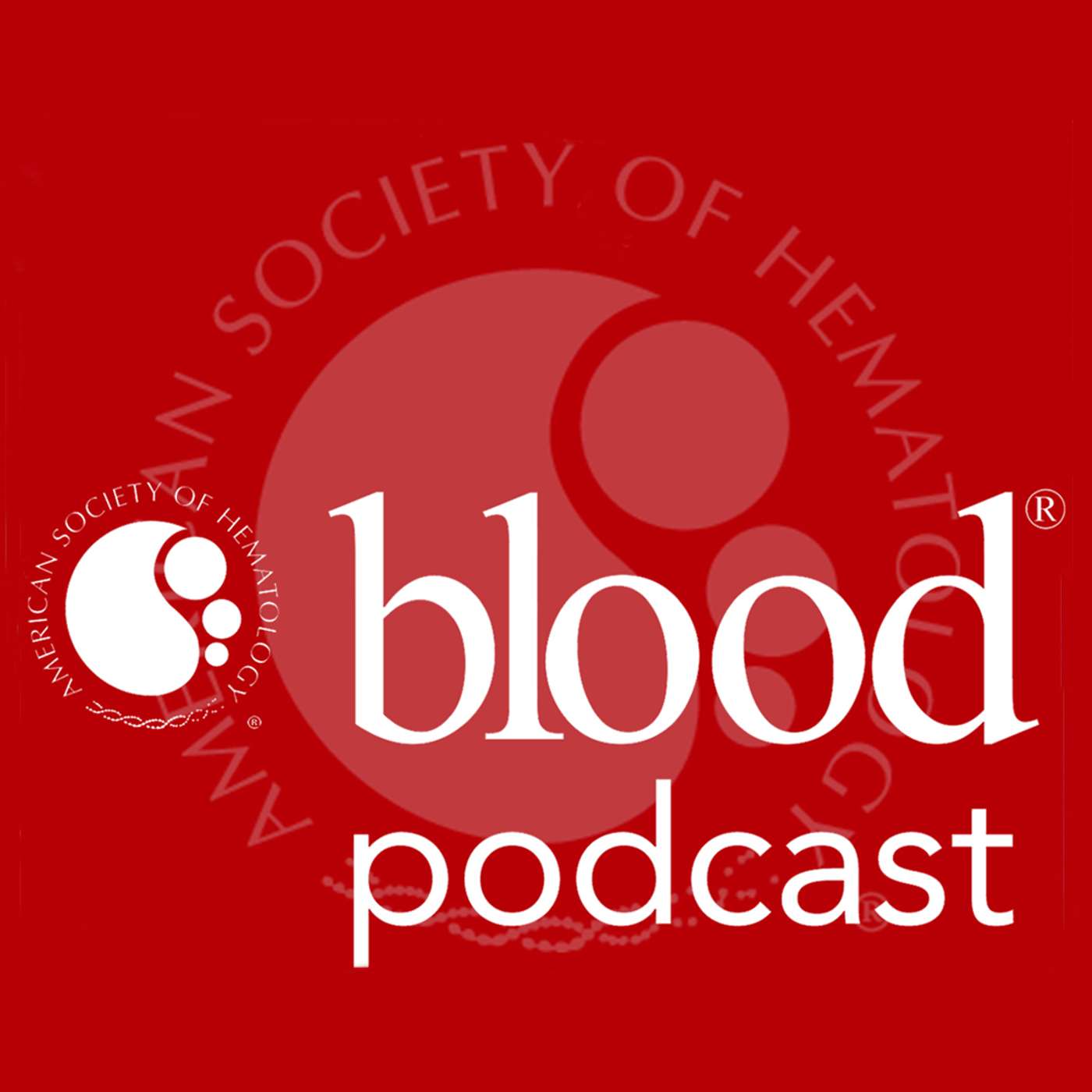
Blood Podcast
American Society of Hematology
The Blood Podcast summarizes content recently published in Blood, the most cited peer-reviewed publication in the field of hematology.
Episodes
Mentioned books
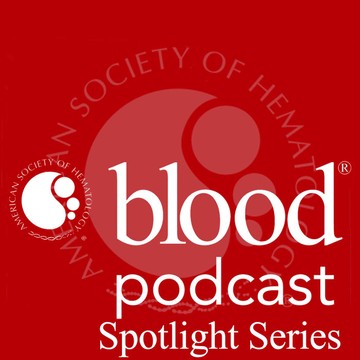
Oct 16, 2025 • 22min
Spotlight on Acute Myeloid Leukemia
In this Spotlight series episode on Acute Myeloid Leukemia, Blood Editor, Dr. Selina Luger interviews Drs. Laura Michaelis and Alexander Perl on their paper in the series titled “The fit older adult with acute myeloid leukemia: clinical challenges to providing evidence-based frontline treatment”. The conversation explores challenges in treating AML across different patient populations. They also focus on treatment approaches for fit older adults with AML, highlighting the need for less toxic therapies and ongoing randomized trials to better understand treatment efficacy. See the full spotlight series on Acute Myeloid Leukemia in Volume 145 Issue 24 of Blood journal.
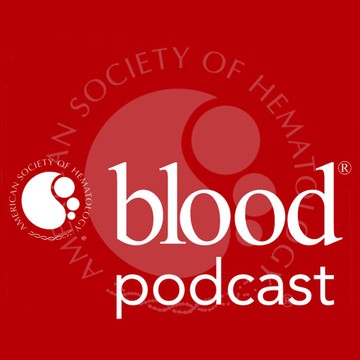
Oct 14, 2025 • 13min
Busulfan-melphalan conditioning in newly diagnosed, transplant-eligible multiple myeloma; and use of spatial transcriptomics to probe the three-dimensional properties of multiple myeloma bone marrow microenvironments
In this week's episode we’ll learn more about a study comparing busulfan-melphalan with melphalan alone as the conditioning protocol for newly diagnosed, transplant-eligible multiple myeloma; then we will discuss data on how three-dimensional transcriptomics can reveal complex interactions between plasma cells and bone marrow microenvironments.Featured ArticlesHigh-dose busulfan-melphalan vs melphalan and reinforced VRD for newly diagnosed multiple myeloma: a phase 3 GEM trialProfiling the spatial architecture of multiple myeloma in human bone marrow trephine biopsy specimens with spatial transcriptomicsPreclinical advances in glofitamab combinations: a new frontier for non-Hodgkin lymphoma
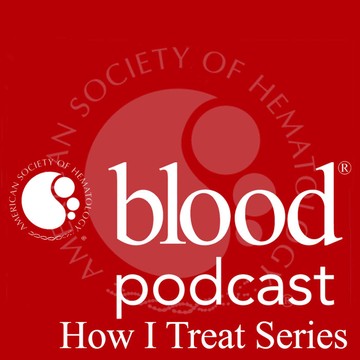
Oct 2, 2025 • 13min
How I Treat Wiskott-Alrich syndrome
Sung-Yun Pai, a clinician-researcher specializing in Wiskott-Aldrich syndrome, shares vital insights on the latest treatment advancements. He discusses the evolving risk-benefit calculus in therapies due to safer options and longer follow-ups. The conversation highlights challenges like late diagnosis, donor matching, and limited access to gene therapy. Pai stresses the urgency of early referrals to specialized centers and deliberates on the decision-making process between transplant and gene therapy, emphasizing the complexities of achieving full correction.

Oct 2, 2025 • 20min
Use of Marstacimab for Prophylaxis in hemophilia A and B; matched-donor allogeneic CD19 CAR-T in adult B-ALL; a new prognostic index for T-cell cutaneous lymphomas
Explore groundbreaking advances in hemophilia treatment with marstacimab, which effectively reduces bleeding without inhibitors. Discover how matched-donor allogeneic CD19 CAR-T therapy enhances outcomes for adult B-ALL patients, showcasing impressive efficacy after lymphodepleting chemotherapy. Dive into the new CLIPI prognostic index for T-cell cutaneous lymphomas, which could revolutionize patient management by identifying those needing intensified treatment based on key risk factors. Tune in for fascinating insights and developments in hematology!

Sep 25, 2025 • 18min
Epstein-Barr virus genomic variants in human disease states, somatic GATA1 mutations and leukemia in Down syndrome, and new definitions for high-risk multiple myeloma
Explore the intriguing connections between Epstein-Barr virus genomic variants and various human diseases, including hematological malignancies. Discover the timing and impact of somatic GATA1 mutations related to leukemias in individuals with Down syndrome. Dive into new high-risk definitions for multiple myeloma, focusing on crucial cytogenetic abnormalities and their implications for patient outcomes. Additionally, learn how these insights could shape future diagnostics and treatment approaches.
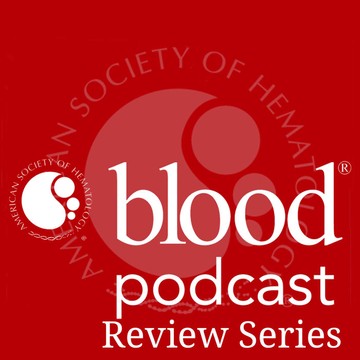
Sep 18, 2025 • 13min
Review Series on Acute Lymphoblastic Leukemia (ALL)
Dr. Mark Litzow, a leading hematology professor from the Mayo Clinic, discusses groundbreaking immunotherapy advancements for Acute Lymphoblastic Leukemia (ALL). He highlights the impressive clinical trial results of treatments like blinatumomab and inotuzumab, boasting high remission rates and improved survival, especially among older patients. The conversation emphasizes the shift towards personalized, less toxic therapies, aiming to enhance patient outcomes and reduce chemotherapy intensity. This innovative approach could revolutionize ALL treatment, offering renewed hope for many.

Sep 18, 2025 • 19min
Azacitidine holds promise in VEXAS syndrome; a step forward in precision blood matching; identifying a new vulnerability in TP53-mutated AML
Discover the promising effects of Azacitidine in treating VEXAS syndrome, showing benefits but also high relapse rates. Learn how advanced genotyping techniques are enhancing blood matching, potentially reducing complications for transfusion patients. Finally, uncover a new therapeutic target related to BAP1 loss in TP53-mutated AML, revealing its unique vulnerabilities and paving the way for innovative treatments using BCL-XL inhibitors. This discussion delves into groundbreaking advancements in the field of blood disorders.

9 snips
Sep 11, 2025 • 19min
Diffuse large B-cell lymphoma’s long-term effects on immune profiles, plasminogen activation and prevention of venous thromboembolism, and PARP inhibitors in hematological malignancies carrying epigenetic mutations
Discover the lasting impacts of diffuse large B-cell lymphoma on immune profiles, revealing how treatment can leave patients with a dysfunctional immune system. Explore new insights into plasminogen activation and its surprising lack of role in preventing venous thromboembolism. Additionally, delve into the exciting potential of PARP inhibitors in targeting hematological malignancies with epigenetic mutations. This engaging discussion sheds light on significant advancements in understanding and treating blood cancers.

4 snips
Sep 4, 2025 • 21min
“Ironing out” Tet2-mutant HSPCs; A CAR-T “license to kill” in T cell leukemia/lymphoma; insights on cHL genetics, through the lens of ctDNA
Discover how mutations in TET2 influence myeloid malignancies and the role of NCOA4 in supporting Tet2-deficient cells. Dive into the promising results from a groundbreaking CAR T therapy that could offer hope for patients with T-cell leukemia and lymphoma. Lastly, explore new insights from a comprehensive study on classical Hodgkin lymphoma genetics through circulating tumor DNA, revealing key subtypes and prognostic markers. These topics promise to reshape our understanding of blood cancers.

Aug 28, 2025 • 15min
Targeting NPM1 in AML with a menin inhibitor; in primates, a CD137 ADC eliminates acute GVHD
In this week's episode we'll learn about targeting NPM1 in acute myeloid leukemia. Researchers report the first clinical evidence of a menin inhibitor inducing complete remissions in AML with a NPM1 mutation. This validates NPM1 as a new therapeutic target in AML, alongside FLT3, IDH1/2, and KMT2A. Also on the podcast: targeting CD137 to prevent graft-versus-host disease. In nonhuman primates, a single dose of a CD137 antibody-drug conjugate provided long-term protection, with one important caveat: the potential for viral reactivation.Featured Articles: Menin inhibition with revumenib for NPM1-mutated relapsed or refractory acute myeloid leukemia: the AUGMENT-101 studyA single dose of a CD137 antibody–drug conjugate protects rhesus macaque allogeneic HCT recipients against acute GVHD


